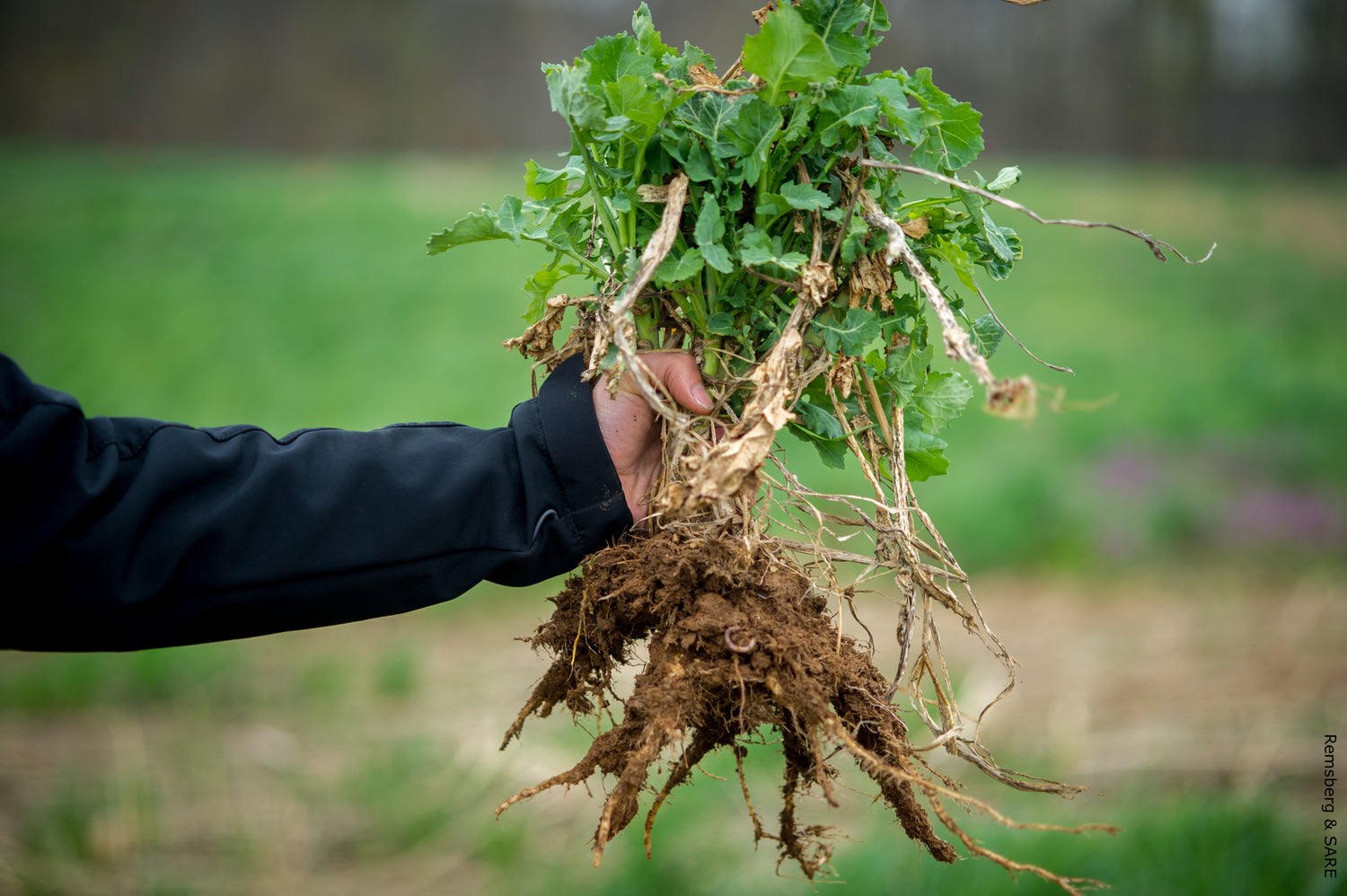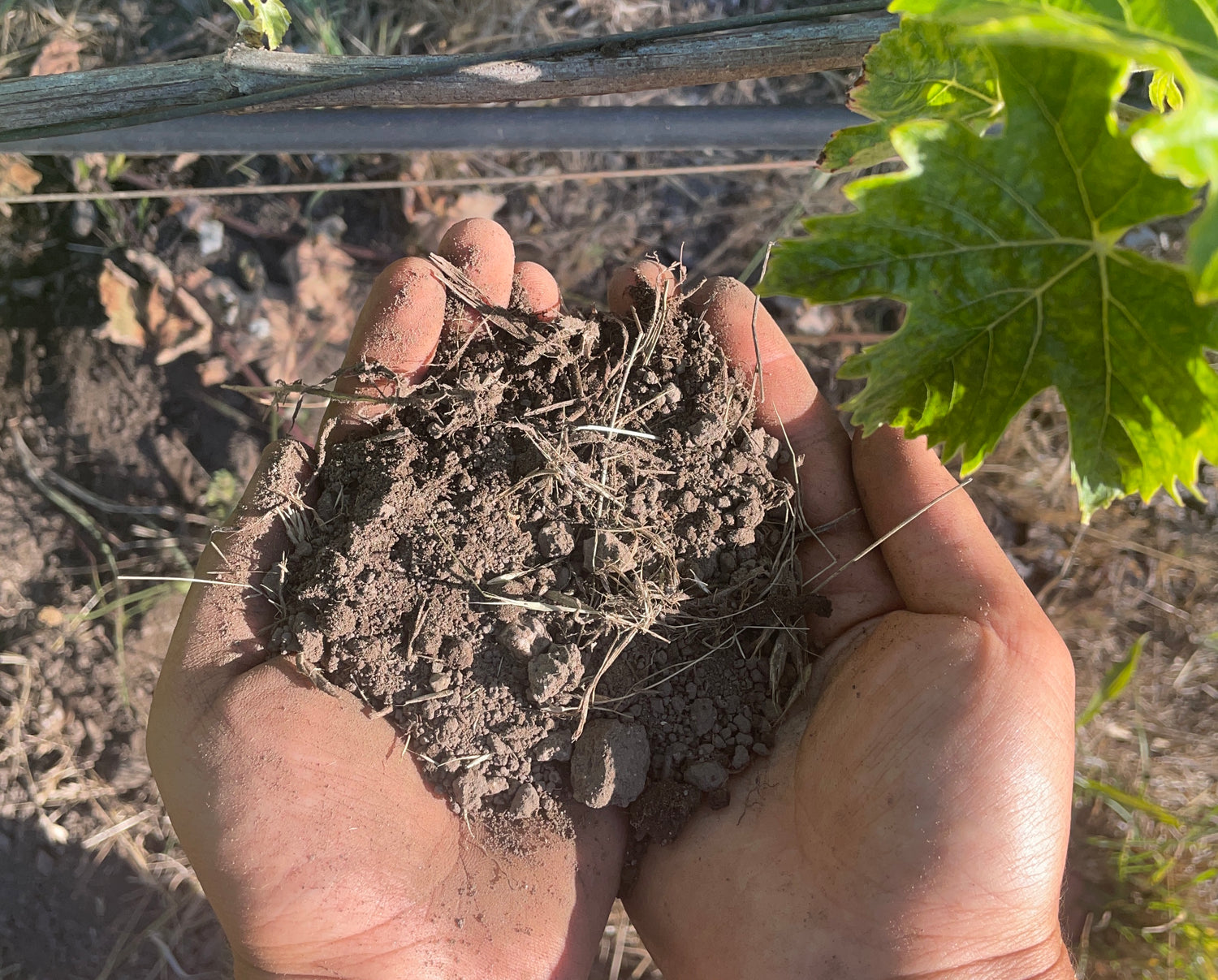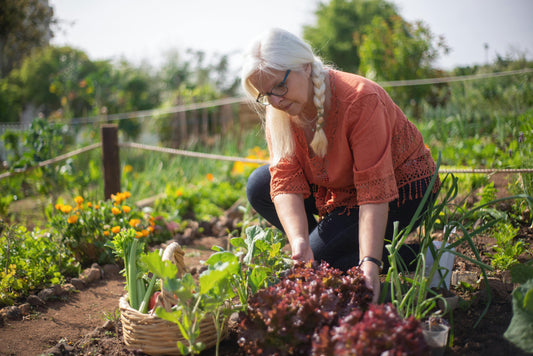Soil health is the foundation of every successful vineyard, directly influencing grape quality, vine vigor, and the distinctive terroir that defines world-class wines. Whether you’re managing a sprawling estate or a boutique vineyard, vineyard soil health testing is essential to ensure your soil supports thriving grapevines. This ultimate guide explores what soil health testing entails, why it’s critical for grape production, how soil characteristics vary across key U.S. wine regions, and how to interpret and act on test results. By optimizing soil health, soil testing for vineyards empowers growers to achieve sustainable viticulture and exceptional wines.
What Is Vineyard Soil Health Testing?
Vineyard soil health testing assesses the chemical, physical, and biological properties of soil to determine its suitability for wine grape cultivation. Key parameters include:
- pH: Measures soil acidity or alkalinity, affecting nutrient availability for grapevines.
- Macronutrients: Nitrogen (N), phosphorus (P), and potassium (K) drive vine growth and grape development.
- Micronutrients: Magnesium, calcium, boron, and zinc support vine health and fruit quality.
- Organic Matter: Enhances soil structure, water retention, and microbial activity.
- Soil Texture: The proportion of sand, silt, and clay influences drainage and root penetration.
These factors shape grape flavor, yield, and terroir expression. For example, well-drained loamy soils promote balanced vine growth, while clay-rich soils retain moisture, impacting grape ripening. Testing identifies nutrient deficiencies or imbalances, enabling precise amendments to optimize vineyard performance. Why Test Vineyard Soil?
Soil health is critical to vineyard success, influencing every aspect of grape production from vine establishment to wine quality. Soil testing for vineyards offers several benefits:
- Improved Grape Quality: Balanced nutrients enhance grape sugar, acidity, and flavor compounds, elevating wine quality.
- Vine Vigor: Optimal soil conditions ensure strong root systems and consistent yields.
- Environmental Sustainability: Testing minimizes nutrient runoff, protecting local waterways and ecosystems.
- Terroir Enhancement: Soil composition shapes the unique flavor profile of wines, a key factor in premium vintages.
- Cost Efficiency: Targeted amendments prevent over-fertilization, saving resources and reducing environmental impact.
Untested soils risk nutrient deficiencies that stunt vines or imbalances that reduce grape quality. A 2021 study of U.S. vineyards found 20% had low potassium levels, leading to uneven ripening and smaller clusters. Regular vineyard soil fertility testing ensures optimal conditions for grapevines, supporting sustainable viticulture. Explore testing at Alluvial Soil Lab.
Key Soil Health Factors for Vineyards
Soil health parameters directly affect grapevine performance and wine quality. Understanding these factors helps growers manage vineyards effectively:
- pH: Grapevines thrive in pH 6.0–7.0. Acidic soils (pH < 6.0) limit nutrient availability, causing stunted shoots, while alkaline soils (pH > 7.5) reduce micronutrient uptake, affecting grape flavor complexity.
- Nitrogen (N): Essential for leaf and shoot growth, nitrogen levels of 20–50 ppm support vigor. Low nitrogen weakens vines, while excess promotes foliage over fruit, reducing sugar content.
- Phosphorus (P): Supports root development and flowering. Levels of 15–30 ppm ensure strong fruit set; deficiencies lead to poor yields.
- Potassium (K): Enhances grape ripening and disease resistance. Levels of 100–200 ppm promote balanced ripening; low potassium causes uneven grape development.
- Organic Matter: 2–5% organic matter improves soil structure and water retention. Low levels reduce vine resilience, while high levels support robust growth.
- Soil Texture: Loamy soils balance drainage and moisture, ideal for grapevines. Clay soils risk waterlogging, delaying ripening, while sandy soils dry out quickly, stressing vines.
- Micronutrients: Boron aids flowering, zinc supports leaf growth, and magnesium enhances photosynthesis. Deficiencies reduce grape quality and yield.
Testing these parameters ensures soils meet grapevine needs, enhancing terroir and wine quality. For example, balanced potassium levels produce grapes with vibrant acidity, critical for sparkling wines. Regular testing supports healthy vineyards and sustainable practices.
Soil Characteristics in Major U.S. Wine Regions
Soil health varies across U.S. wine regions, influencing grape varieties and vineyard management. Below are key cities, their prominent grape varieties, and soil characteristics:
- New York (Finger Lakes): Known for Riesling and Cabernet Franc. Acidic, silty loams with moderate organic matter require lime to raise pH for nutrient availability.
- Los Angeles (Santa Ynez Valley): Grows Syrah and Grenache. Sandy loams with low organic matter need compost to improve water retention.
- Chicago (Southwest Michigan): Produces Pinot Noir and Chardonnay. Clay-heavy loams retain moisture, requiring drainage improvements.
- Houston (Texas Hill Country): Known for Tempranillo and Viognier. Clay-rich soils with high pH need sulfur to optimize nutrient uptake.
- Phoenix (Southern Arizona): Grows Malvasia and Sangiovese. Sandy, alkaline soils with low potassium benefit from targeted fertilization.
- Philadelphia (Southeastern Pennsylvania): Produces Chambourcin and Vidal Blanc. Loamy soils with high organic matter may need pH adjustments.
- San Antonio (Texas Hill Country): Known for Tannat and Mourvèdre. Calcareous soils with high pH require acidifying amendments.
- San Diego (Temecula Valley): Grows Zinfandel and Montepulciano. Sandy soils with low organic matter need nutrient additions.
- Dallas (North Texas): Produces Merlot and Cabernet Sauvignon. Clay loams retain nutrients but need aeration to prevent compaction.
- San Jose (Santa Clara Valley): Known for Pinot Noir and Chardonnay. Silty soils with balanced texture often lack boron, affecting fruit set.
- Austin (Texas Hill Country): Grows Syrah and Grenache. Limestone-rich soils with high pH need sulfur or gypsum.
- Jacksonville (North Florida): Produces Muscadine and Blanc du Bois. Sandy soils with low organic matter require compost.
- San Francisco (Sonoma County): Known for Pinot Noir and Sauvignon Blanc. Volcanic loams with balanced nutrients may need potassium adjustments.
- Columbus (Ohio River Valley): Grows Catawba and Traminette. Silty loams with moderate nutrients need pH corrections.
- Charlotte (Yadkin Valley): Produces Cabernet Franc and Petit Verdot. Clay-rich soils retain moisture, needing aeration.
- Seattle (Columbia Valley): Known for Merlot and Riesling. Acidic, silty soils require lime to raise pH.
- Denver (Western Colorado): Grows Syrah and Viognier. Sandy loams with low organic matter need compost.
- Boston (Southeastern Massachusetts): Produces Seyval Blanc and Pinot Gris. Acidic, loamy soils need pH adjustments.
- Miami (South Florida): Known for Muscadine. Sandy, low-nutrient soils require frequent fertilization.
- Napa (Napa Valley): Grows Cabernet Sauvignon and Chardonnay. Volcanic loams with high fertility support premium wines.
Testing ensures soils in these regions meet grapevine needs, enhancing grape quality and terroir.
Interpreting Vineyard Soil Test Results
Soil test results provide data on pH, nutrients, organic matter, and texture, compared to optimal ranges for grapevines. Key considerations include:
- pH: Target 6.0–7.0. Below 6.0, apply lime to improve nutrient availability; above 7.5, use sulfur to enhance micronutrient uptake.
- Nitrogen (N): 20–50 ppm supports vine vigor. Low levels reduce growth, while excess causes overgrowth, lowering grape sugar content.
- Phosphorus (P): 15–30 ppm ensures strong roots. Deficiencies reduce fruit set, impacting yields.
- Potassium (K): 100–200 ppm promotes ripening. Low levels cause uneven grape development, affecting wine balance.
- Organic Matter: 2–5% improves soil structure. Low levels reduce water retention, stressing vines.
- Micronutrients: Boron (0.5–2 ppm) aids flowering, zinc (2–5 ppm) supports leaves, and magnesium (50–100 ppm) enhances photosynthesis.
Management strategies include:
- Nutrient Amendments: Apply NPK fertilizers to address deficiencies, guided by test results for precision.
- pH Adjustments: Use lime for acidic soils or sulfur for alkaline soils to optimize nutrient availability.
- Cover Crops: Clover or rye improves soil structure and nutrient cycling, enhancing vineyard health.
- Compost: Adds organic matter to boost microbial activity and moisture retention.
- Drip Irrigation: Maintains soil moisture without nutrient leaching, ideal for dry climates.
Who Needs Vineyard Soil Health Testing?
Wine grape soil testing benefits a range of stakeholders in viticulture:
- Vineyard Managers: Test to optimize grape quality and yield for consistent production.
- Winemakers: Ensure soil supports terroir-driven wines with distinct flavor profiles.
- Grape Growers: Maintain vine health and sustainability through balanced soil conditions.
- Urban Wineries: Address soil challenges in non-traditional vineyard settings.
- Land Developers: Assess soil suitability before establishing new vineyards.
- Agricultural Co-ops: Ensure consistent grape quality for member growers.
Testing is critical for both new and established vineyards, particularly where soil types vary or nutrient depletion is a concern.
Frequently Asked Questions About Vineyard Soil Health Testing
What parameters are included in vineyard soil health tests?
Tests evaluate pH, nitrogen, phosphorus, potassium, micronutrients (e.g., magnesium, boron), organic matter, and soil texture. These factors determine vine health and influence wine terroir.
How does soil pH affect grapevines?
Grapevines thrive in pH 6.0–7.0. Acidic soils (pH < 6.0) limit nutrient uptake, stunting growth, while alkaline soils (pH > 7.5) reduce micronutrient availability, impacting grape flavor.
Can grapevines grow in nutrient-poor soils?
Low nitrogen or potassium reduces vine vigor and grape quality. Targeted fertilization, guided by testing, ensures healthy growth and balanced fruit development.
How often should vineyard soils be tested?
Test every 2–3 years, especially before planting or expansion. Established vineyards benefit from annual testing to monitor nutrient depletion and maintain grape quality.
What are signs of poor soil health in vineyards?
Yellowing leaves, stunted shoots, or small grape clusters suggest nutrient deficiencies or pH imbalances. Uneven vine growth indicates soil issues, confirmed by testing.
How do soil nutrient imbalances affect vineyards?
Excess nitrogen promotes foliage over fruit, reducing sugar content, while low potassium causes uneven ripening, impacting wine balance. Testing guides precise amendments.
What soil amendments improve vineyard health?
Compost boosts organic matter and microbial activity. Lime raises pH in acidic soils, while sulfur lowers it in alkaline soils. Cover crops enhance soil structure and fertility.
How does soil health impact vineyard ecosystems?
Balanced soils support microbial activity, improving nutrient cycling. Excess nutrients can cause runoff, harming waterways. Testing promotes sustainable vineyard ecosystems.
How does soil affect grape quality?
Low potassium reduces grape sweetness, affecting wine balance. Phosphorus deficiencies lower fruit set, reducing yields. Testing ensures soils support high-quality grapes.
Is testing different for new vs. established vineyards?
New vineyards require baseline testing to assess suitability. Established vineyards test to monitor nutrient depletion, ensuring consistent grape quality and yield.
What factors influence vineyard soil health?
Soil texture, organic matter, and nutrient levels shape vine health. Management practices, like irrigation and fertilization, also impact soil fertility, requiring regular testing.
Can weather affect vineyard soil health?
Heavy rain leaches nutrients, reducing fertility, while prolonged dry periods deplete soil moisture, stressing vines. Testing after weather events ensures accurate management.
Do soil microbes matter for vineyards?
Microbes cycle nutrients, supporting vine health. Low organic matter reduces microbial activity, weakening soils. Compost restores balance, enhancing vineyard productivity.
Can poor soils support non-grape plants in vineyards?
Soils with moderate nutrient deficiencies can support cover crops like clover or rye, which improve soil health. Testing confirms suitability for inter-row planting.
Why is soil texture critical for vineyards?
Loamy soils balance drainage and nutrient retention, ideal for grapevines. Clay soils risk waterlogging, delaying ripening, while sandy soils dry out quickly. Testing informs management.
How does irrigation impact vineyard soil health?
Drip irrigation maintains moisture without leaching nutrients, ideal for dry climates. Over-irrigation can wash away nutrients, reducing fertility. Testing guides irrigation practices.
Unlock Your Vineyard’s Potential with Healthy Soil
Vineyard soil health testing is the key to exceptional grapevines and world-class wines, ensuring your soil supports vibrant vines and distinctive terroir. Whether you’re a vineyard manager, winemaker, or grape grower, testing empowers you to optimize soil conditions for sustainable viticulture.












